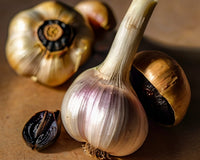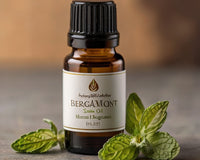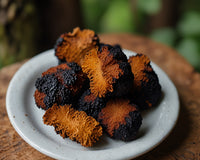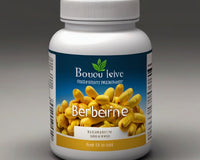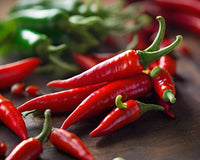People need small amounts of sodium to function properly, but too much sodium can be harmful to your health. According to the Dietary Guidelines for Americans, a diet high in sodium increases the risk of high blood pressure, a leading cause of stroke and heart disease.
Most dietary sodium (more than 70%) comes from eating packaged and prepared foods, rather than from added salt when cooking or eating. Many foods contain too much sodium, so the U.S. Food and Drug Administration (FDA) works with the food industry to reduce sodium in a variety of foods. Many packaged foods have sodium, but you can lower your daily sodium intakeby using the Nutrition Facts label.
Look at the tags!
Make informed decisions with Nutrition Facts labels!
- Know daily values. Daily values are reference amounts of nutrients to be consumed or less each day. The daily value for sodium should be less than 2,300 milligrams (mg) per day.
- Use % Daily Value (%DV) as a tool. %DV is the percentage of the daily value of each nutrient in a serving of food and shows how much of the nutrient makes up the total daily diet.
Use %DV to determine whether a serving of food is high or low in sodium, and compare and choose foods that consume less than 100% of the DVdaily >.
As a general guide:5% of the DV per serving of sodium or less is considered low, and 20% or more of the DV per serving of sodium is considered high.
- Watch portion sizes. The nutritional information listed on the Nutrition Facts label is usually based on one serving of food. Check portion sizes and the number of servings you eat or drink to determine how much sodium you are consuming.
Food choices are important!
According to the Centers for Disease Control and Prevention (CDC), about half of the sodium Americans consume comes from the following foods:
- Bread and rolls
- Pizza
- Sandwiches, hamburgers, hot dogs
- Cold cuts and cured meats (ham and turkey)
- Soups
- Burritos and Tacos
- Snacks (chips, biscuits)
- Chicken (including processed chicken)
- Cheese (including processed cheese)
- Eggs and Omelette
Sodium content in similar types of foods can vary greatly, use the Nutrition Facts label to compare products and don't forget to check serving sizes for an accurate comparison.
Salt and Sodium: Definition
The words "salt" and "sodium" are often used interchangeably, but they do not mean the same thing. Salt (also called by the chemical name sodium chloride) is a crystalline compound with rich properties. Sodium is a mineral and one of the chemical elements found in salt.
Sodium as a food ingredient
Sodium has many uses as a food ingredient, such as for curing meat, baking, thickening, retaining moisture, enhancing flavor (including that of other ingredients), and as a preservative. Some common food additives, such as monosodium glutamate (MSG), sodium bicarbonate (baking soda), sodium nitrite, and sodium benzoate, also contain sodium, and the sodium content listed on the Nutrition Facts label accounts for (less) of the total content. .
Surprisingly, some foods that are not salty can still be high in sodium, which is why taste alone is not an accurate way to tell how much sodium is in a food. For example, while some foods high in sodium, such as kimchi and soy sauce, taste salty, there are also many foods, such as cereals and pastries, that contain sodium but are not salty. Likewise, even though your personal consumption may not be high in sodium, certain foods that you may eat multiple times throughout the day (such as bread) may accumulate large amounts of sodium over the course of the day.
Check nutrition claims on packaging
You can also check nutrient statements on food and drink packages to quickly identify foods that are lower in sodium. Here is a guide to common requirements and what they mean:
|
What to say |
What does this mean |
Product selection Sodium/per 100g |
| Salt-free/sodium-free | Less than 5 mg sodium per serving | 0-5mg |
| Extremely low sodium | Contains 35 mg or less sodium per serving | 0-35mg |
| Low Sodium | Contains 140 mg or less sodium per serving | 0-140mg |
| Less sodium | At least 25% less sodium than regular products | |
| Slight sodium/salt | At least 50% less sodium than regular products | |
| No added salt | No salt is added during processing - these products may not be salt-free/sodium-free unless otherwise stated |
Sodium and blood pressure
Sodium attracts water, and a high-sodium diet draws water into the bloodstream, which increases blood volume and, in turn, blood pressure. Hypertension (also called hypertension) is a condition in which blood pressure remains elevated over time. High blood pressure overworks the heart, and the strong blood flow can damage arteries and organs (such as the heart, kidneys, brain, and eyes). Uncontrolled high blood pressure increases the risk of heart attack, heart failure, stroke, kidney disease and blindness. Additionally, blood pressure often increases as we age, so limiting sodium intake becomes more and more important every year.
Know your quantity
Sodium is an essential nutrient that the body needs in relatively small amounts (assuming you don't sweat profusely) to maintain fluid balance and keep muscles and nerves running smoothly. However, most people eat too much and they may not even know it.
The average American consumes approximately 3,400 milligrams of sodium per day. But the Dietary Guidelines for Americans recommend limiting sodium intaketo less than 2,300 milligrams per day, which is equivalent to about 1 teaspoon of salt!
10 Simple Tips to Reduce Sodium Consumption
Understanding sodium in food and exploring new ways to prepare food can help you achieve your sodium goals. And if you follow these tips to reduce the amount of sodium you consume, the "taste" of sodium will diminish over time—so, eventually, you might not even miss it!
- Read Nutrition Facts Labels
Compare and choose foods that consume less than 100% DV (less than 2,300 mg) of sodium per day. - Prepare your own food when you can
limit packaged sauces, mixes, and "ready-to-eat" products (including seasoned rice, instant noodles, and ready-made pasta). - Increase flavor without adding sodium
Limit the amount of salt added to food when cooking, baking or at the table. Try using salt-free seasonings, herbs and spices instead of salt to add flavor to your food. - Buy Fresh Food
Choose fresh meats, poultry and seafood rather than processed varieties. Also, check packages of fresh meat and poultry to see if brine or brine has been added. - Watch Your Vegetables
Buy fresh, frozen (without sauces or seasonings), or low-sodium or no-salt canned vegetables. - Rinse sodium-containing canned foods, such as beans, tuna, and vegetables, before eating. This removes some of the sodium.
- Reduce the salt in your snacks
Choose low-sodium or unsalted nuts, seeds and snack products (such as chips and pretzels), or switch to carrots or celery sticks. - Consider your seasoning
Sodium can build up. Choose light or reduced-sodium dressings, add oil and vinegar to salads instead of bottled dressings, and use only a small amount of dressing from a dressing packet instead of the entire package. - Reduce portion sizes
Less food means less sodium. Prepare smaller portions at home and consume less food when dining out - choose smaller portions, split entrees with friends or take home a meal. - Choose low-sodium options at restaurants
Ask for foods you prepare to be salt-free, and ask for sauces and salad dressings "on the side," then use them sparingly. You can also ask if nutritional information is available and choose a lower sodium option

